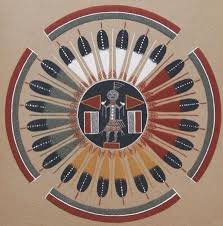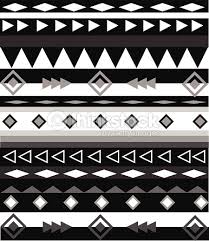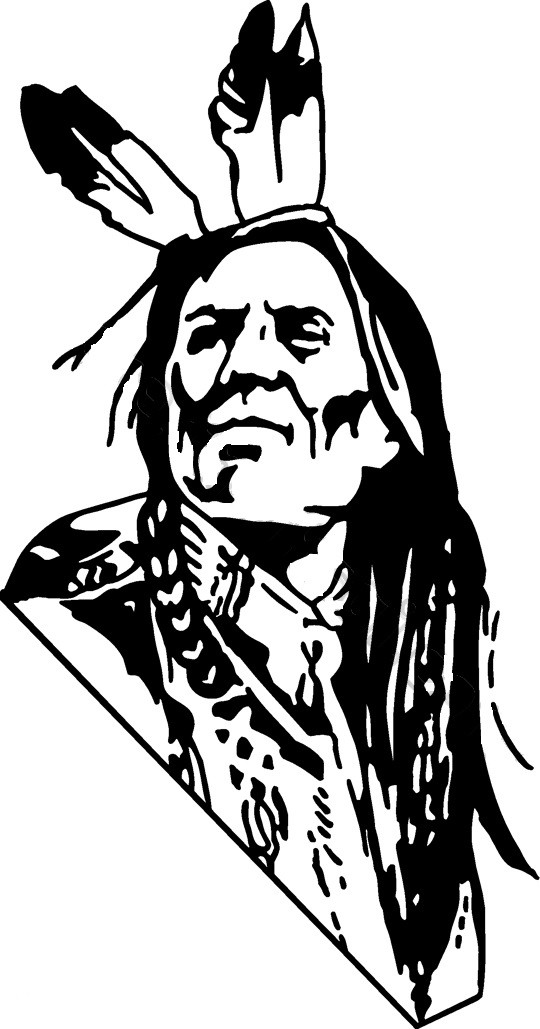No products
Top sellers
-

Turquoise and feathers Bracelet
Woman and man jewelry Sterling Silver Bracelet inlaid with a turquoise...
149,00 € -

Turquoise and feathers native american bracelet
woman jewelry sterling silver bracelet inlaid with a beautiful...
83,00 € -

Turquoise and coral earrings
Woman jewelry Sterling silver earrings inlaid with turquoise and coral...
75,00 € -

Native american earrings
Woman jewelry Base metal earrings engraved with native american symbols...
12,50 € -

-

Indian head 5 cents nickel
Woman and man jewelry 5 cents nickel with an indian head, the feather...
29,00 € -

Five stripes silver Ring
Woman and man jewel Five stripes Sterling silver Ring including two...
55,00 € -

Oyster copper turquoise ring
Woman jewelry Sterling silver ring inlaid with an oyster copper...
56,00 € -

-

Conchos native american earrings
Woman jewelry Earrings with two german silver conchos inlaid with...
48,00 €
Categories
-
Native american jewellery
- Rings
- Earrings
- Bracelets
- Necklaces
- Pendants
- Abalone jewellery
- Amber jewellery
- Amethyst jewellery
- Azurite jewellery
- Charoïte jewellery
- Chrysocolle jewellery
- Labradorit jewellery
- Lapis lazuli jewellery
- Larimar jewellery
- Malachite jewellery
- Obsidian jewellery
- Tiger eye jewellery
- Opal jewellery
- Rhodochrosite jewellery
- Spiny oyster jewellery
- Onyx Jewellery
- Authentic license plates
- Leather bracelets
- Silver chains
Manufacturers
No manufacturer
New products
-

Zia cross Pendant
For men and women Handcrafted sterling silver Zia cross pendant Heigth...
125,00 € -

Flower turquoise and coral Ring
For women Unique Handcrafted sterling silver flower ring set by 8...
145,00 € -

Kingman turquoise pendant
For men and women Unique Handcrafted sterling silver pendant set by a...
125,00 € -

Turquoise and coral Pendant
For men and women Unique Handcrafted sterling silver pendant set by a...
118,00 € -

Kingman turquoise Ring Size 8,5
For men and women Unique Handcrafted sterling silver ring set by a...
129,00 € -

Zia cross and turquoise bracelet
For man and woman Unique Handcrafted sterling silver Zia cross bracelet...
225,00 € -

Golden Hill turquoise Bracelet
For women and men Unique Handcrafted sterling silver bracelet set by a...
230,00 € -

Sonoran turquoise Ring 8 3/4
For men and women Unique Handcrafted sterling silver ring set by a...
148,00 € -

Sonoran turquoise Ring
For men Unique Handcrafted sterling silver ring set by a beautiful...
155,00 € -

Sonoran turquoise Pendant
For women and men Unique Handcrafted sterling silver pendant set by a...
125,00 € -

Turquoise and coral Ring
For women Handcrafted sterling silver ring set by two turquoise stones...
125,00 € -

Turquoise and coral Ring
For woman Handcrafted sterling silver ring set by two turquoise stones...
110,00 € -

Turquoise and Spiny Oyster Ring
For women Handcrafted sterling siver ring set by two turquoise stones...
125,00 € -

Kingman turquoise pendant
For women and men Unique Handcrafted sterling silver pendant in an...
48,00 € -

Spearhead and turquoise Pendant
For women and men Unique Handcrafted sterling silver pendant in a...
129,00 € -

Turquoise and Eagle pendant
For women and men Unique Handcrafted sterling silver pendant adorned by...
85,00 € -

Kingman turquoise ring
For women and men unique Handcrafted sterling silver ring set by a...
88,00 € -

Flower Spiny Oyster Ring
For woman Unique Handcrafted sterling silver ring in a flower shape set...
95,00 € -

Turquoise and Spiny Oyster Ring
Woman and man ring Unique Handcrafted sterling silver ring in a...
128,00 € -

Turquoise and coral Ring
For women Unique Handcrafted sterling silver ring in a spearhead shape...
128,00 € -

Turquoise and coral Bracelet
For women and men Unique Handcrafted sterling silver bracelet set by...
248,00 € -

Turquoise and lapis bracelet
For women and men Unique Handcrafted sterling silver bracelet set by a...
235,00 € -

Royston turquoise Ring Size 6.5
For women Unique Handcrafted sterling silver ring set by a beautiful...
89,00 € -

Kingman turquoise ring
For women Unique Handcrafted sterling silver ring set by a beautiful...
75,00 € -

Kingman turquoise ring Size 7
For women and men Unique Size 7 Handcrafted sterling silver ring set by...
99,00 € -

Royston turquoise Ring Size 8
For women and men Unique Size 8 Handcrafted sterling silver ring set...
99,00 € -

-

Last blog articles
National Parks and Indian territories
Movies and Documentaries with Native Americans.
List of the international Ring sizes
The great dates of a bloody chronicle
Native American art through the centuries
See allBlog categories
Blog archives
Search on blog
Suppliers
- Tony Escada
Viewed products
-

Eagle and turquoise...
woman and man jewel sterling...
-

Lapis lazuli ring
Woman ring Sterling silver ring...
-

Boulder opal pendant
Woman and man jewellery Unique piece...
Native American art through the centuries
Published :
02/22/2017 17:02:49
Categories :
Native American art through the centuries
Today,Native American Arts and Crafts becomes rare and always more expensive.A beautiful ancient piece is very expensive because it's practically unique like a collector's item.Many Indians earn their live with their art like the Cherokees,east of Northern Carolina,they are making baskets,wood carving and beadwork.In some reservations,the indians abandoned the ancient manual method for modern manufacturing method.The Zunis passed from pottery to Jewelry.Silversmithing is at first rank by the Hopis and Zunis as well.
The buyer have to know that in certain places,imitations are coming from Hong Kong,Japan and the Philippines.A 100% Indian fabrication product is mostly stamped with the symbol or the name of the artist.For exemple,you will find on some Hopi pieces the "Sunforehead" to prove the authenticity of the item.
Since many years ago,the Indian leaders are fighting to save their arts and crafts.At the Native American art institute of Santa Fe,the young student are learning painting,carving,the ceramic and all about gemstones.Today,the distinction between true or false arts and crafts is clearly defined.Fines and punitions can be imposed in case of fraud.
Jewelry
The American Southwest mentions a lot of images.Deserts and sagebrush also the cactus flowering at spring.The Navajos herding the sheeps and weaving colored wool rugs.Mesas and Canyons shimmering in silence,smothering heat floating over the dry countries.The howling of the Coyotes,Roadrunners and Jack Rabbits,archeological ruins.Indian rodeos and katchinas dances.Pottery,rugs and baskets.Turquoise Jewelry and silver.
Indian Jewelry!Of all the pictures of the Southwest,turquoise and silver is the most spreaded one.Indian jewelry is made since centuries;today its created,worn and sold everywhere in the Southwest.Since ancient times at today,indian Jewelry is a unique American art form.Today,people of the Southwest are wearing jewelry naturally and gracefully every day of their life,beltbuckles,bead necklaces,cuffs,rings,earings.The streets of Santa Fe and Scottsdale explode with that art.Even the babies in their mother's arms are wearing small turquoise earings and silver bracelets.

Sandpainting
By the sandpaintings of the Southwest Indians,where the most known works are these from the Navajos,the Medicine Man(or Hatalii) is painting vaguely on the Hogan's floor,where the ceremony takes place,he pours the colored sand through his fingers with skill.When the drawing is finished,the Medicine Man checks his accuracy.Then he asks to the sick person to sit on the sandpainting and at the same time he sings healing songs.Its requested to the sandpainting action to open the spirits gate and allow them to come and go.The followers think that sitting on the sand helps the patient to absorb the spiritual power,and so the spirits takes away the disease.For that reason the sandpainting is erased because in the name of the sacred nature of the ceremony,the sandpaintings have a beginning,are used and destroyed after 12 hours.

Dreamcatchers
By the Native Americans,a Dreamcatcher is an Ojibwé indian item(also called Chippewa Indian,from the Grand lakes region).It's composed with a hoop, in its center a web which is catching the bad dreams that cannot enter the sleep of its owner.The Dreamcatcher must be hunged up in the direction of the rising sun,so the sunrays can destroy the bad dreams who were caught in the web during the night.The good dreams will go through the small hole in the middle to enter the feathers of the Dreamcatcher.One bead in the center represents the spider weaving its web,and many beads represents the good dream who were caught in the web.Because it became illegal to integrate some feathers,stones are used now to replace them.At the beginning the Ojibwés Indians made the Dreamcatchers with willow branches,sinew or plant ropes.The Native Americans think that the hoop is symbolizing unity and strength.

Pottery
Between 400 and 700 B.J.-C.,the Indians of the southwest began to make pots.They found a method that was to put clay strips one on an other and then smooth them with tools.During the centuries,pottery making became a sophisticated art.Each tribe have it's own ornemental style with symbols like snakes,firebirds,rainbirds,the rain and the sun are the most used motives.Pottery of Zia have sky and cloud paintings.Santo Domingo geometricals motives,San Ildefonso pottery angulars motives and curves.Santa Clara and San Juan are known for their matt black colors.You can still find a lot of quality pottery in the southwest by the Pueblos Indians also by the Hopis in the three Mesas.

Kachinas
The first feeling for the non-Indians,seeing Kachinas statues,it's only an Indian doll.For the Hopis,the Zunis and the Pueblos Indians,it's a symbol of beneficials supernatural beeings.The size varies from 1.18 inch to 11.8 inch sometimes more.The Hopis are carving them into "Cottonwood" roots,painting them and adding them animal skins and feathers.They are making big ears and eyes as well,noses and mouths like beaks.The Kachinas are the reflection of the attitude of the Hopis to their children,hard but fair.When the kids aren't kind,the Kachinas are punishing them,but the parents beg for the Kachinas clemency,who give them all the time.Many museums have impressives Kachinas collections,the Heard Museum at Phoenix,Arizona,and the Northern Arizona Museum of Flagstaff.

Rugs
The Navajos began weaving about 250 years ago.At the beginning they were making blankets and then Rugs between 1870 and 1890.Unfortunately that art disapeared since a long time because the women cannot combine weaving and a wage activity.Beeing in contact with the Pueblos Indians,the Navajos were exposed at weaving art,and after a while they imagined very elaborated motives,and at the end they surpassed the Pueblos in the quality of their work.You can still find Navajos Rugs in some Trading Posts,but the most beautiful ones belongs to private collections or museum.


college degrees
04/07/2017 13:43:09
Good post. I learn something new and challenging on blogs I stumbleupon everyday. It's always helpful to read through content from other authors and use something from other sites. http://educlue.eu
Kateya art amerindien
04/07/2017 13:41:38
Thank you very much for your kind review.Sincerely.